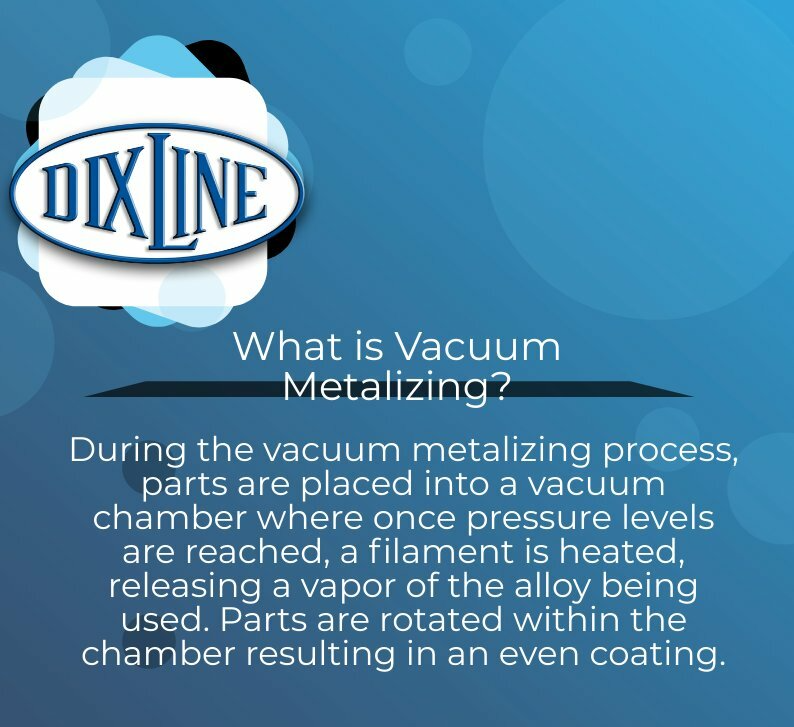Vacuum Metallization Method of EMI Shielding
The main objective of any type of shielding is to prevent the passage of electromagnetic waves into or out of the device. EMI shielding can work by reflection, absorption, or by carrying the electromagnetic radiation to ground. The fundamental aim is to establish a Faraday Cage to provide an EMI shield.
Plastics have made great inroads into the electronics enclosure market for a range of reasons such as:
- Cost Reduction
- Weight Reduction
- Ease of Production
- Improved Design Freedom
Unfortunately, plastics are transparent to electromagnetic radiation and provide no inherent EMI shielding. The rapid rise in the use of plastics in portable consumer electronics has therefore driven the development of EMI shielding of plastics.
Dixline Corporation utilizes the advanced method of vacuum metallization to establish a Faraday Cage and EMI shielding.
The specialized equipment of this application method applies a thin coating of aluminum to the surface of the plastic to provide EMI shielding.
Aluminum is used because it has a high conductivity and is highly corrosion resistant in most environments.
Vacuum metallizing is a multiple stage process:
- Parts are cleaned to give good adhesion between the substrate and the vacuum deposited aluminum.
- Plastic part is masked to cover any areas that do not require coating.
- A layer of aluminum (up to 10 microns) is applied to the plastic surface to provide the conductivity and main EMI shielding.
The Process of Vacuum Metalizing
Vacuum metallizing can be used for complex shapes, but often requires a mask to ensure that the metal is deposited in the correct locations. This can be done either by custom mask tooling or by hand masking.
Vacuum metallizing can also be carried out on thermoformed parts to form the equivalent of a metal can for board level EMI shielding.
Applications
EMI shielding is used for a wide variety of products such as:
- Personal computer and mobile communication housings
- Medical equipment housings
- GPS devices
- Aerospace components
- Automotive components
- Analytical instruments
- Defense and military component housings






